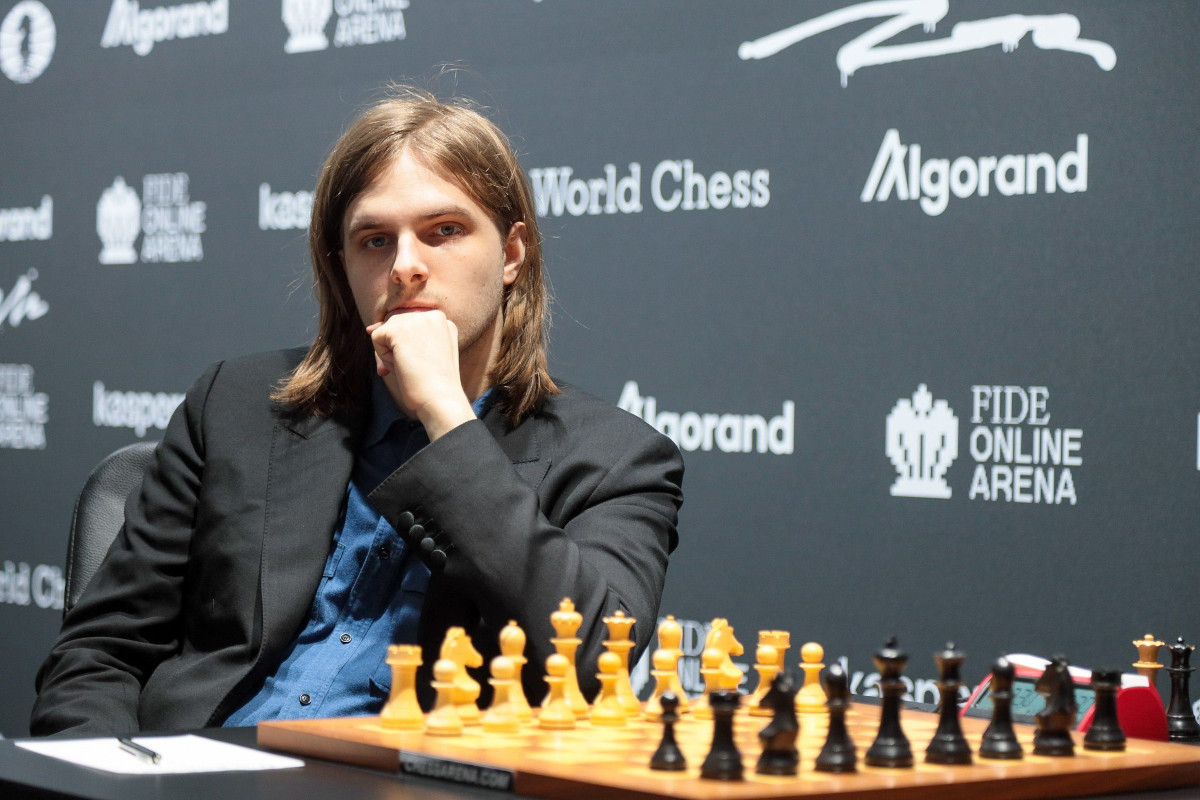Sole leaders in all four groups
Curiously, after two rounds, the standings tables in all four groups at the FIDE Grand Prix look exactly the same. Each group has a sole leader on 1½ points, two players trailing a half point behind, and a tail-ender on ½ out of 2. Since only the winner of each group moves on to the semifinals, we expect those sitting in the cellar to start upping the aggressiveness in the rounds to come.
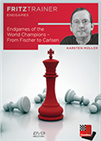 Let endgame expert Dr Karsten Müller show and explain the finesses of the world champions. Although they had different styles each and every one of them played the endgame exceptionally well, so take the opportunity to enjoy and learn from some of the best endgames in the history of chess.
Let endgame expert Dr Karsten Müller show and explain the finesses of the world champions. Although they had different styles each and every one of them played the endgame exceptionally well, so take the opportunity to enjoy and learn from some of the best endgames in the history of chess.Pools A and D had seen two draws in round 1, but now have US grandmasters Hikaru Nakamura and Leinier Dominguez in the lead, respectively. Nakamura got the better of Andrey Esipenko with white on Saturday, while Dominguez played the Sicilian to take down Alexei Shirov.
In Pool B, Radoslaw Wojtaszek and Vladimir Fedoseev had grabbed an early shared lead by winning on opening day. Late replacement Wojtaszek is still leading after drawing Grigoriy Oparin with white, while Fedoseev is now sharing second place with Richard Rapport, after the latter took the Russian down in the most impressive game of round 2.
Finally, Pool C saw both games ending in a draw, which means Levon Aronian kept the lead thanks to his Friday victory over Vidit Gujrathi.
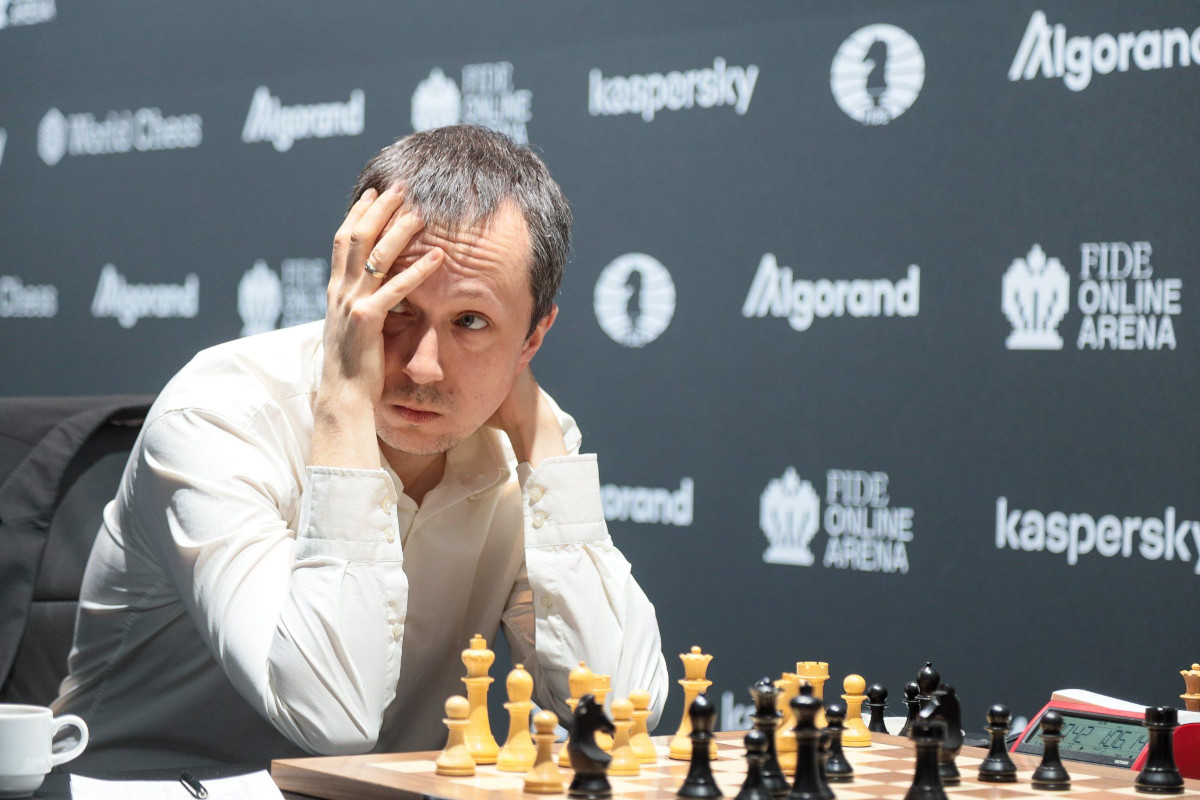
Still leading group B — Radoslaw Wojtaszek
Pool A: Naka’s sharp tactical eye
Out of an English Opening, Hikaru Nakamura, playing white, was the first to deviate from theory in his game against Andrey Esipenko. The Russian began to spend vast amounts of time trying to deal with the early middlegame position, but was nonetheless slowly outplayed by his better-prepared opponent.
By move 24, Naka already had a clear advantage, and he did not have trouble finding a nice tactical shot to continue upping the pressure.
24.b5 forcefully opens the c-file for White’s rooks to penetrate the opponent’s position. There followed 24...Bxb5, and the American once again found the best continuation in 25.Re4, maximizing his pieces’ activity.
25...Qf7 26.Rxe7 Qxe7 27.Rxc7 Rd7 28.Rc8+ Rd8 followed.
And here came the coup de grâce, with Nakamura needing 9 minutes to make sure that 29.Bxf6 worked in his favour. The idea is that after 29...gxf6 30.Qg4+ Kf8 31.Rxd8+ Qxd8, White has 32.Qb4+
Naka had foreseen this whole line, noting that here he gets back the piece and enters a clearly superior queen endgame. Once the dust settles, he will emerge a pawn up, but more importantly he will have the much safer king — with a curious-looking pawn structure protecting him on the kingside!
Fedoseev continued fighting until move 46, but Nakamura never faltered and thus got his first victory of the event — his first classical tournament in over two years.
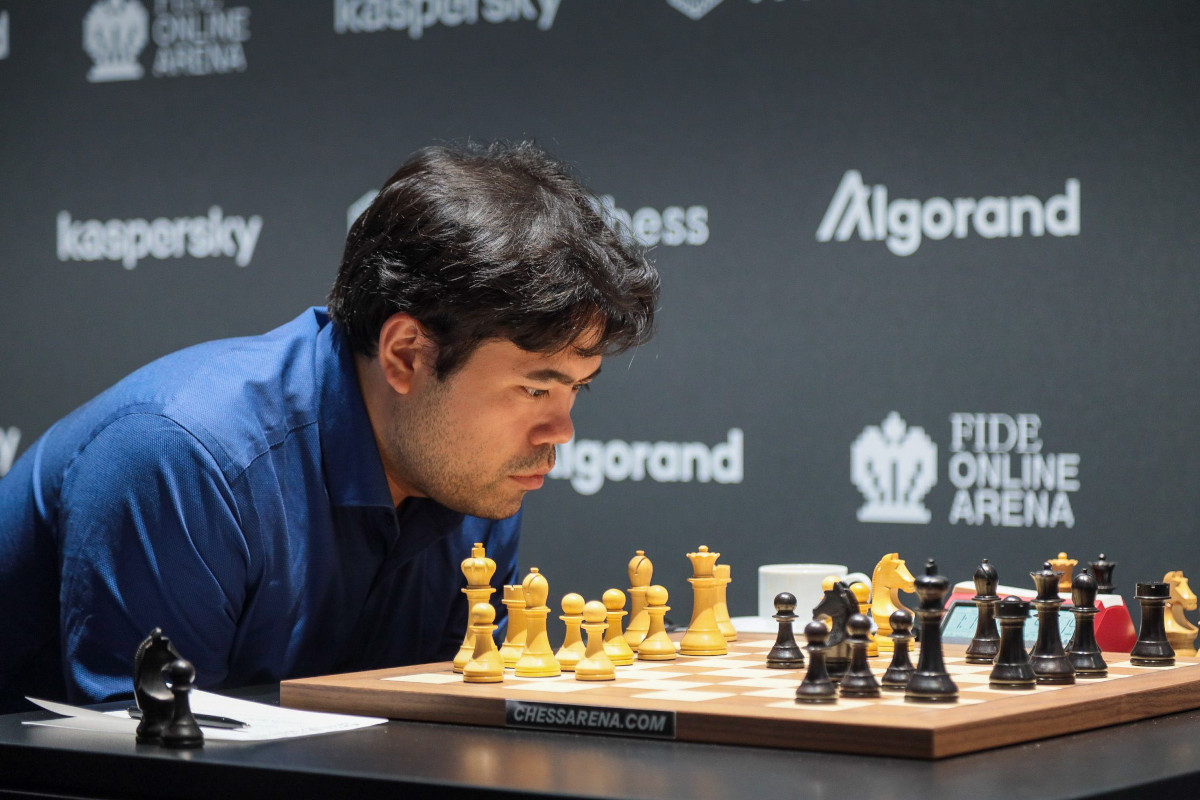
Hikaru Nakamura
Pool B: A stunning plan
While Radoslaw Wojtaszek failed to convert a better position into a win against Grigoriy Oparin, two well-known fighting players showcased their creativity in what turned out to be a brilliant victory for Richard Rapport. The Hungarian had the white pieces against Vladimir Fedoseev, and saw the Russian going for a risky line on move 16.
White has just played 16.b4, to which most players would naturally respond with 16...Nd7 — in this line, after 17.Rd1 (or 17.0-0-0) Black plans to continue with ...Nd5 and ...Rac8, attacking the c4-pawn and getting enough compensation for the sacrificed pawn.
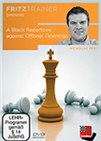 Many club players have their favourite pet opening variations which aren’t necessarily main lines. It’s important to know how to handle these variations as your opponent will likely know his systems well. In this DVD, GM Nicholas Pert provides a detailed Black repertoire against many of these Offbeat Opening choices.
Many club players have their favourite pet opening variations which aren’t necessarily main lines. It’s important to know how to handle these variations as your opponent will likely know his systems well. In this DVD, GM Nicholas Pert provides a detailed Black repertoire against many of these Offbeat Opening choices.None of that happened, though, as Fedoseev was in the mood for complications and went for 16...Nb3, when 17.Rd1 both attacks the d6-pawn and threatens to trap the knight with Rd3. The Russian had seen this, of course, and continued with 17...a5 — the idea is not to respond to 18.Rd3 with 18...a4, but to go for 18...axb4 19.Rxb3 bxa3, getting a dangerous passer on the a-file, while White’s kingside pieces are still undeveloped.
Once again, however, the contenders did not follow the most obvious line, as Rapport thought for eleven minutes before playing 18.Rxd6.
There followed 18...axb4 19.axb4 Ra1+ 20.Rd1 Rea8 21.Be2 Nc1 22.Ng4 R8a2 23.Nxf6+ Kf8
And here is when things got even more interesting. Black had given up two pawns to get activity with his rooks and knight, and in the diagrammed position he is threatening to grab the bishop on e2. According to the engines, White is better after the cagey 24.Bf1, but will need computer-like precision to untangle his pieces and prove his advantage.
Instead, the ever-creative Rapport had planned to simply give up the piece with 24.Kf2, preparing to transfer his king to h4 and regain the initiative, as Black’s pieces are the ones that will look out of play on the first ranks of the queenside!
It was a marvellous plan by the Hungarian, who seven moves later was the one doing the attacking with his better-coordinated army.
While the black knight is completely out of play on c1, White’s rook, knight and king are a pain for the opposite monarch — just to illustrate this point, note that a move like 31...Nb3, trying to bring back the knight, fails to 32.Rg8+ Kh7 Nf6# mate.
Fedoseev found nothing better than 31...Bxe4, which was responded by the powerful 32.g4, threatening the same mating pattern shown above. Soon enough, however, Rapport grabbed the piece and went on to score a memorable 52-move victory! Doubtlessly, the game will be analyzed numerous times in the near future.
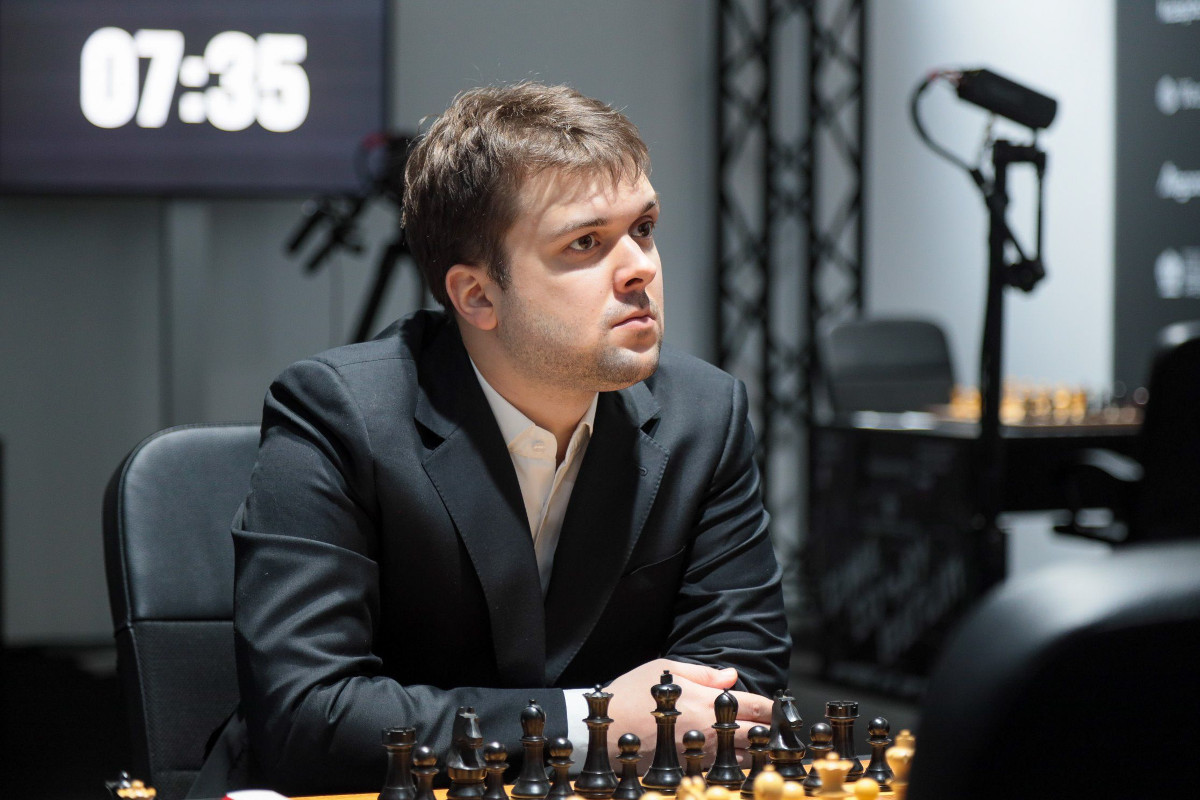
It takes two to tango — Vladimir Fedoseev’s creative play helped in the creation of a remarkable game of chess
Pool C: A dangerous underdog
Two draws that lasted fewer than 40 moves were seen in group C on Saturday. While Daniil Dubov and Levon Aronian signed the peace treaty in a symmetrical position, Vincent Keymer was a pawn up when he agreed to a draw in his game against Vidit Gujrathi.
There is no way for White to break through in this endgame with opposite-coloured bishops. However, for a second day in a row, Keymer showed he is perfectly capable to create problems for his higher-rated opponents — the young German is the clear underdog ratingwise and will face top seed Aronian in Sunday’s third round.

Vincent Keymer
Pool D: Dominguez outplays Shirov
In group D, Pentala Harikrishna gained a pawn in a queenless middlegame position against Wesley So. The Filipino-born grandmaster, however, kept things under control throughout, proving once again that he is one of the strongest technical players in the world.
Meanwhile, Alexei Shirov was facing a highly theoretical Sicilian Defence against Leinier Dominguez. Not surprisingly, a sharp tactical struggle ensued. A critical position was reached on move 24.
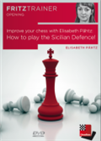 The continuous stream of new ideas in the Sicilian makes 1..c5 the most popular answer to 1.e4. On this DVD I do give an introduction to the most important Sicilian systems.
The continuous stream of new ideas in the Sicilian makes 1..c5 the most popular answer to 1.e4. On this DVD I do give an introduction to the most important Sicilian systems.
As it usually happens in these double-edged positions, even the smallest detail can have major consequences. Here Shirov’s 24.Qd1 was not the most precise, as 24.Qf2 was the correct alternative.
The problem is that after the text move, Black has 24...Nb5, threatening a check that will force White to part with his strong dark-squared bishop. The engine, in fact, gives 25.g5 as the best option for White, when 25...Bxg5 would be responded by 26.h4, opening up lines in front of the black king — of course, Black is not forced to capture on move 25 and can play 25...Bg7 instead, but that is a whole other story.
Shirov went for 25.c4, and Dominguez quickly forced the exchange of minor pieces with 25...Nc3+ 26.Bxc3 Qxc3
White has an extra pawn, but Black will soon gain control over the all-important dark-squared long diagonal. Dominguez did not have it easy against the ever-resourceful Spaniard, but in the end managed to convert his advantage into a win. The Cuban-born grandmaster is now the sole leader of the group, and is set to face Harikrishna with the white pieces in round 3.
Links
